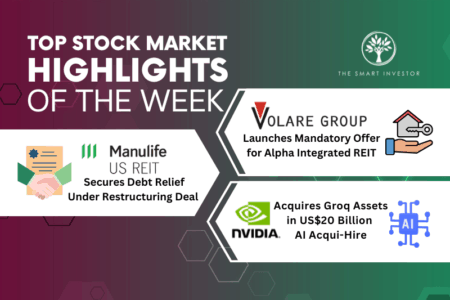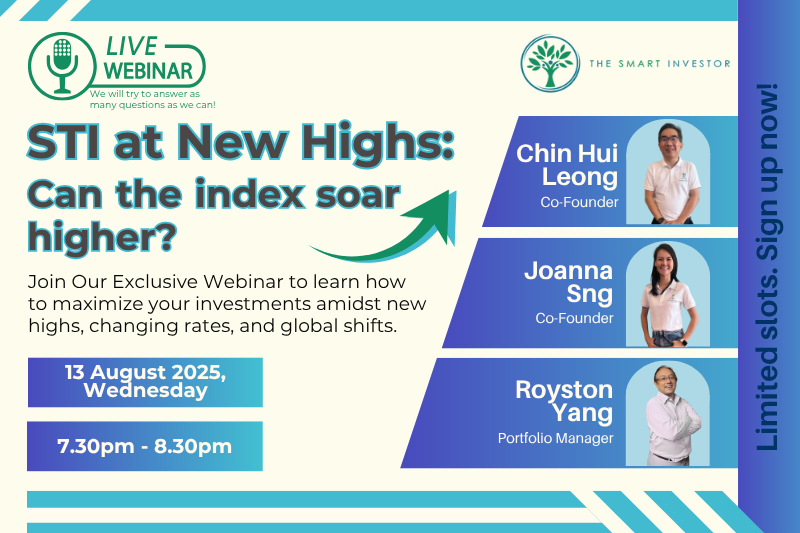Buying stocks at all-time highs feels like arriving late to a party.
But, in the AI revolution, the real celebration might just be getting started.
Optimism over artificial intelligence (AI) has driven the S&P 500 and NASDAQ indexes to all-time highs, with P/E ratios of over 25x and 33x respectively.
However, despite what might seem like stretched valuations, there are still US-listed stocks that offer compelling value over the long-term, even at elevated levels.
Here are three of them.
TSMC (NYSE: TSM)
TSMC is the world’s leading semiconductor foundry, manufacturing chips for companies like AMD (NASDAQ: AMD) and NVIDIA (NASDAQ: NVDA) that are key to the AI revolution.
The Taiwanese company’s shares are dual-listed in Taiwan and the US.
In 2024, TSMC generated US$90.1 billion in revenue, and net income of US$35.5 billion.
This financial strength has enabled the company to continue investing in its manufacturing capabilities.
The Taiwanese giant’s CapEx is accelerating rapidly from nearly US$30 billion in 2024 to an expected US$40 to 42 billion in 2025.
Not many companies have the scale to support this level of investment, which helps TSMC build an economic moat few players can match.
In comparison, Intel expects gross capital expenditure (CapEx) of approximately US$20 billion this year, or US$8 to US$11 billion net of government grants and partner contributions.
Looking ahead, the company’s growth will depend on continued AI-driven demand for chips, as well as its cutting-edge technology.
TSMC’s 2nm process, entering volume production in 2025, offers the industry’s highest transistor density and best power efficiency, positioning the company several years ahead of its competitors.
Investors should note that TSMC’s forecast for US$40 to US$42 billion in CapEx represents nearly 34% of its expected 2025 revenue, an extraordinarily high ratio that requires sustained demand and pricing power to generate adequate returns, even for a company of its size.
Additionally, the company faces geopolitical pressures to build facilities in higher-cost regions like Arizona and Germany, which may carry lower margins than its Taiwan operations.
While TSMC’s track record of capital allocation is strong, execution risk remains as spending accelerates.
The chipmaker’s superior profitability, with gross and operating margins substantially exceeding competitors, positions the company to capitalise on growing demand for advanced AI semiconductor manufacturing.
Alphabet (NASDAQ: GOOG)
Al is both a threat and an opportunity for Alphabet.
Back in May 2025, its shares fell by over 7% after Apple‘s (NASDAQ: AAPL) services chief Eddy Cue testified that Google searches on the Safari browser fell for the first time in April due to users increasingly turning to AI for searches.
Google has disputed this claim.
At the same time, the company is also at the forefront of adopting the technology.
YouTube recently unveiled over 30 AI tools that can help create new content and enhance the video production process, and looks set to take on a bigger role in generating growth for Alphabet’s advertising business.
Higher demand for AI from the customers of Alphabet’s Google Cloud unit should also drive up sales there.
Morningstar (NASDAQ: MORN) expects Google Cloud sales to grow 26% annually on average over the next five years.
The company has also invested in making specialised AI chips for a decade, which are custom-designed for the training and inference work required to create and use large language models (LLMs).
Alphabet’s search business, which remains the company’s largest segment by revenue, is fighting back against rivals like OpenAI’s ChatGPT by adding AI Overviews to most Google searches.
Indeed, few companies are as well-resourced as Google to meet the challenges posed by the rise of AI.
The search giant had net income of over US$100 billion in 2024, more than US$125 billion in operating cash flow over the same period, and US$96 billion in cash, cash equivalents, and marketable securities as at the end of 2024.
Alphabet is forecast to spend approximately US$85 billion in CapEx in 2025, up from a previous estimate of US$75 billion, with further increases anticipated in 2026.
However, investors in Alphabet should be mindful that the company continues to face significant regulatory scrutiny.
While a judge recently declined to order the divestiture of Chrome or Android in one case, the company faces ongoing antitrust proceedings, including a separate case regarding its advertising technology business, and continues to engage with European regulators regarding compliance with the Digital Markets Act.
These regulatory challenges have already resulted in billions of dollars in EU fines, with more potential penalties looming.
Meta Platforms (NASDAQ: META)
Another firm that is riding the AI wave is Meta.
The owner of Facebook has been leveraging AI tools to drive better user engagement and monetisation on its social media platforms, including Instagram and Reels.
Earlier this year, it also introduced ads to messenger platform Whatsapp, 11 years after acquiring it.
While Meta’s open-source LLaMA model may not generate direct revenue, it positions the company as a key player in AI development and attracts top talent.
The social network operator is also making huge investments in areas like data centres and custom chips, with total CapEx spending for 2025 estimated at between US$66 to 72 billion.
Like TSMC and Alphabet, Meta is a financial behemoth — it made US$165 billion in sales in 2024, and US$62 billion in net income.
Meta has plenty of AI plans in the pipeline.
In its most recent quarter, CEO and founder Mark Zuckerberg spoke of how its AI-powered recommendation model for ads had driven 5% more ad conversions on Instagram and 3% on Facebook.
He also cited opportunities in AI video editing tools, its chatbot Meta AI, and AI devices such as the Ray-Ban Meta glasses.
Of course, all this spending creates the risk of a misallocation of capital.
Further, while Google Cloud’s investments have a direct return from higher usage of its public cloud services, Meta lacks a presence in the public cloud market, which means it has fewer avenues to make a return on its investments.
Meta also faces competition from other social media platforms like TikTok and Snap, which may eat into its advertising business.
Analysts at Morningstar estimate that the company’s sales will have a compound annual growth rate of 14% over the next four years.
Get Smart: High Stakes, Smart Bets
While it might seem scary to invest while markets are at an all-time high, long-term investors have the advantage of time, and companies that experience strong growth over a number of years can grow into their high valuations.
TSMC, Alphabet, and Meta offer a unique combination of scale, profitability, and the potential for supercharged AI-driven growth.
However, investors should note that all three companies are making substantial capital investments in AI infrastructure, with combined 2025 CapEx exceeding US$180 billion, which may pressure near-term profitability even as these investments position them for long-term competitive advantage.
Long-term investors should consider allocating a portion of their portfolio to one or more of these stocks.
Big Tech is spending hundreds of billions on AI, and the ripple effects are just beginning. Our new investor guide shows how AI is changing the way companies generate revenue, structure their business models, and gain an edge. Even if you already know the major players, this report reveals something far MORE important: The why and how behind their moves, and what it means for your portfolio. Download your free report now.
Follow us on Facebook, Instagram and Telegram for the latest investing news and analyses!
Disclosure: Silas does not own shares in any of the companies mentioned.






